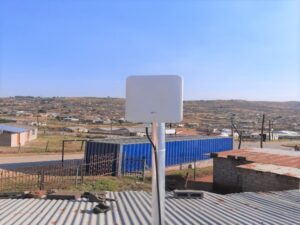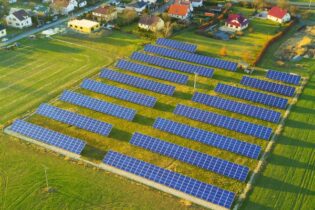Along with the rest of the world, South Africa’s evolution within the Fourth Industrial Revolution (4IR) environment depends on accessible, cost efficient and fast connectivity in the cloud. Alastair Currie speaks to Steve Briggs, chief sales and marketing officer at SEACOM about the shape of things to come.
South Africa’s first spectrum auction, held on 17 March 2022, raised an estimated R14,4 billion and is a positive development in transitioning all levels of government, business, and society (urban and rural) to the 5G environment. “The Independent Communications Authority of South Africa’s spectrum auction is the start of a longer-term process as mobile cellular operators (particularly the auction winners) invest in new telecommunications infrastructure, such as cell towers,” Briggs explains. “Our role in support is the progressive installation of our terrestrial fixed line fibre network across cities and towns in South Africa, interconnected by SEACOM’s subsea cable connection from Europe,” Briggs explains. “Fibre, now and in the future, is the backbone for 4IR connectivity in terms of handling the increasing volumes of large data.” To ensure the successful roll-out of 5G, South Africa’s current base station density will need to be increased by a factor of four. Each of the towers will also need a high-speed fibre connection to ensure seamless cellular transmission over what is traditionally referred to as “the last mile” between the signal tower and the mobile device end user. “We are therefore very excited about increasing demand for fixed line services,” Briggs continues. Integrated solutions strategy Positioning for diversified growth, SEACOM is on an acquisition drive to support its information and communications technology (ICT) and enterprise network solutions. Recent developments include the acquisition of EOH Network Solutions and Hymax from EOH Holdings Limited. These acquisitions, effective 1 September 2022, now enable SEACOM to provide an end-to-end service in South Africa as a converged telecommunications provider, with an allied penetration into the data centre market. The EOH acquisitions form part of a broader African penetration strategy. Recent examples include SEACOM’s buyout of privately owned metro fibre networks in Nairobi and Kampala, respectively, along with associated local data centres. The unfolding subsea frontier “As technology advances, fixed line data transfer rates will accelerate at ever-increasing speeds at every stage of the network. This starts at the subsea level,” Briggs explains. SEACOM’s subsea cable, installed and incrementally upgraded from inception in 2009 is currently rated at 3,2 terabytes per second (tbps). The 17 000 km network interconnects France, Djibouti, Kenya, Tanzania, Mozambique, India, and South Africa. In contrast, Google’s new Equiano subsea cable – featuring space-division multiplexing technology – will run at some 144 tbps per second, a revolutionary step up. This will also be the world’s first subsea cable to incorporate optical switching at the fibre-pair level in contrast to the conventional approach of wavelength-level switching. “SEACOM is a partner on the Equiano subsea cable project, and we look forward to unlocking the value for customers across Africa as the full system comes online,” says Briggs.Equiano runs from Lisbon to Cape Town, with branching connections along the West African coastline. The culmination of this journey was the landing of the cable on 8 August 2022 in Melkbosstrand, some 25km up the West Coast from the City of Cape Town. The first phase is expected to go live in the last quarter of 2022.
“As these blistering data speeds land at the various cable landing stations, the next step is to leverage this capability. This is where the role of the data centre is key, and it’s an asset class that has received massive focus in South Africa in the past 12 months, with multi-billion-rand facilities opening up in Cape Town and Johannesburg,” Briggs continues. Connectivity trends Currently, in South Africa, the average fibre to the home link is probably around 200 megabytes (MB) per second and 500 MB per second for business links. Gigabyte (GB) speeds are also common in the major metro areas at a cost. Briggs says the metro fibre networks that process all this traffic have generally been at around 10 GB speeds for the past five years, with some now being upgraded to 100 GB per second. In turn, data speeds on the national long-distance fibre routes are currently at upwards of 400 GB per second. “In most urban centres, the internet is getting faster and cheaper, and this trend will continue as new subsea cable services land, and the terrestrial fibre network increases nationally,” says Briggs. “This will help to shape future WiFi availability and reach the most remote rural areas that don’t currently have good coverage.” As a responsible corporate citizen, SEACOM supports the Project Isizwe initiative, a non-profit organisation that partners with internet service providers to bring the internet to under-serviced and underprivileged communities. The project establishes WiFi zones delivering an uncapped 10 MB per the second link for just R5 a day. “It’s essential that everyone in South Africa is connected, and Project Isizwe demonstrates that it’s definitely achievable,” stresses Briggs. In an allied development, SEACOM has entered into a collaboration and cooperation agreement with the Council for Scientific and Industrial Research (CSIR) to support and develop ICT-Based SMMEs. In this respect, the CSIR has developed a new broadband technology, called Television White Space. SMMEs will be able to use this new technology to connect with targeted markets. In turn, SEACOM will support these SMMEs with on-net services through its enterprise development programme, with further support and training through its partner programme. Computing in the cloud Going forward, and for every industry and sector of society, workloads will inceasingly be powered in the cloud. Currently, it is estimated that some 60% of workloads globally exist in the cloud. This is predicted to grow closer to 100% in the next five years. “There’s no doubt that cloud computing combined with super-fast internet takes everyone into exciting new territory, working in a secure, intelligent and near-real time data rich environment,” Briggs concludes.






